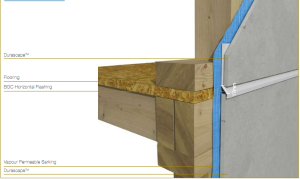Floor Vibration.xls

Description
Floor Vibration for Australian Standard AS3623
Australian Standard AS3623, titled 'Domestic Metal Framing,' primarily focuses on the design, fabrication, and erection of cold-formed steel framing for residential and light commercial buildings. This standard does not specifically address floor vibrations. However, floor vibrations can be an important consideration for the design of floor systems, particularly in steel-framed structures.
For floor vibration assessment in Australia, you may refer to the following standards and guidelines:
- AS 1170.0:2002: 'Structural Design Actions - General Principles'
- AS/NZS 1170.1:2002: 'Structural Design Actions - Permanent, imposed and other actions'
- Engineers Australia's Technical Note TN61: 'Floor Vibrations Due to Human Activity'
To assess floor vibrations, consider the following steps:
-
Define geometry and properties: Determine the dimensions, materials, and properties of the floor system, including spans, spacing, and stiffness of the floor members (such as joists, beams, or trusses).
-
Determine loading: Identify the relevant loads acting on the floor system, including dead loads (self-weight and other permanent loads) and live loads (occupancy or use). Consider the dynamic characteristics of these loads, such as rhythmic activities or moving machinery.
-
Establish acceptance criteria: Define the acceptance criteria for floor vibrations, such as the maximum allowable acceleration or velocity, based on the intended use of the floor and the sensitivity of the occupants to vibrations. Refer to guidelines such as Engineers Australia's Technical Note TN61 for recommendations on acceptable vibration levels.
-
Calculate natural frequencies: Determine the natural frequencies of the floor system, which are related to the stiffness and mass of the floor. The natural frequencies are important for assessing the dynamic response of the floor to loads or vibrations.
-
Assess dynamic response: Evaluate the dynamic response of the floor system to the applied loads, considering the natural frequencies, damping, and mode shapes of the floor. This can be done using analytical methods, such as the Rayleigh-Ritz method or finite element analysis, or by conducting experimental tests on the floor system.
-
Design and optimize the floor system: If the floor system does not meet the established acceptance criteria for vibrations, adjust the design of the floor members, connections, or bracing to improve the stiffness, mass, or damping of the floor system. This can help reduce floor vibrations and improve the comfort and performance of the floor.
By considering floor vibrations during the design process, you can ensure that the floor system meets the required performance criteria for the intended use and provides a comfortable and safe environment for the occupants. Always consult relevant Australian standards and guidelines, as well as local building codes, to ensure compliance with applicable requirements for floor vibrations.
Calculation Preview
Full download access to any calculation is available to users with a paid or awarded subscription (XLC Pro).
Subscriptions are free to contributors to the site, alternatively they can be purchased.
Click here for information on subscriptions.

